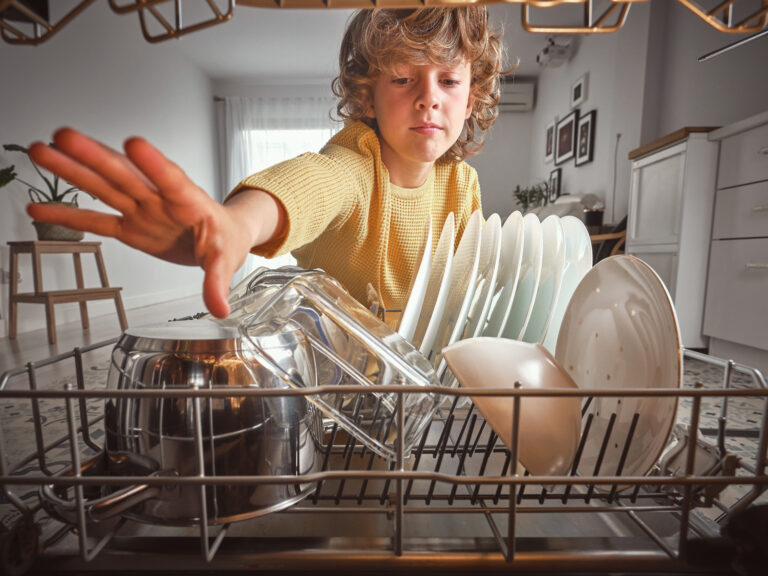Eco-Friendly Cleaning: Tips and Tricks for a Greener Home

Eco-Friendly cleaning practices have gained increasing attention in recent years, as more and more people strive to reduce their environmental impact and maintain a healthier home. By opting for sustainable cleaning methods, it is possible to achieve a deep, thorough clean without relying on harmful chemicals or contributing to waste production. Incorporating eco-friendly practices into daily routines can lead to a safer, more efficient cleaning process that benefits both the environment and personal health.
There are several tips and tricks that can be easily implemented into everyday cleaning habits, creating a more sustainable way of maintaining a clean living space. These environmentally-friendly approaches include using natural alternatives, conserving water and energy, and repurposing or recycling materials. By exploring and applying these green techniques, individuals can effectively transition towards an eco-conscious lifestyle, in which the benefits extend beyond a spotless home.
In the following article, an array of simple yet powerful practices will be presented and discussed, including innovative solutions like homemade cleaning products and energy-efficient cleaning appliances. By combining practical methods and reliable eco-friendly recommendations, the goal of fostering a cleaner, healthier, and more sustainable living environment can be achieved.
Understanding Eco-Friendly Cleaning
Environmental Impact of Cleaning Products
Conventional cleaning products are known to contain harmful chemicals that can negatively affect the environment. When these chemicals are washed down the drain, they enter waterways and aquatic ecosystems, causing harm to marine life and disrupting the delicate balance of ecosystems.
Eco-friendly cleaning products, on the other hand, use sustainable ingredients and have a reduced environmental impact. This means that they break down more quickly and are less likely to accumulate in our water systems, soil, or air. Some common environmentally friendly ingredients include:
- Biodegradable surfactants: These substances help to remove dirt and stains while being gentle on the environment.
- Plant-based ingredients: Instead of petroleum-based products, plant-based ingredients are harvested from sustainable sources and are less harmful to nature.
- No phosphates: Phosphates may be effective in cleaning, but they contribute to water pollution and harmful algal blooms. Eco-friendly cleaning products avoid phosphates for a greener option.
Health Benefits of Green Cleaning
Switching to eco-friendly cleaning practices can also have significant health benefits for individuals and families. Traditional cleaning products contain volatile organic compounds (VOCs) and other harsh chemicals, which can cause various health issues, such as:
- Respiratory irritation
- Allergic reactions
- Headaches
- Eye and skin irritation
By using green cleaning products, the risk of exposure to harmful chemicals is minimized. This is particularly beneficial for people with allergies, asthma, or chemical sensitivities.
Additionally, eco-friendly cleaning products often use essential oils and natural fragrances, which can provide a calming and therapeutic sensory experience. These natural scents are also less likely to trigger allergic reactions compared to synthetic fragrances.
In conclusion, Understanding Eco-Friendly Cleaning is essential in today’s world as it not only aids in reducing the environmental impact of harmful cleaning products but also has significant health benefits. By switching to sustainable and eco-friendly cleaning products and practices, we can make a positive difference for the environment and our overall well-being.
Essential Ingredients for Eco-Friendly Cleaning
The Role of Vinegar and Baking Soda
Vinegar is a versatile and eco-friendly cleaning ingredient. It can be used as a natural disinfectant and deodorizer due to its high acidity, which helps to kill bacteria and remove odors. It can be used to clean various surfaces, such as countertops, windows, and appliances.
Baking soda is another popular eco-friendly cleaning ingredient, known for its gentle abrasive action and ability to neutralize odors. It is particularly useful for cleaning stubborn stains and grime on surfaces, such as sinks and ovens.
These two ingredients can be used together as a household cleaning solution:
- 1 part baking soda
- 1 part vinegar
- 1 part water
This mixture can be used as a multi-purpose cleaner for various surfaces around your home.
Lemon, Salt, and Castile Soap
Lemon juice is another eco-friendly cleaning ingredient, as it contains natural citric acid that can help to remove stains and grime. It also has natural antibacterial and antiviral properties, making it an effective sanitizer.
Salt, when combined with lemon juice, can create a natural abrasive scrub that effectively removes tough stains without harming surfaces or causing environmental damage.
Castile soap is a vegetable-based soap that is biodegradable and free of synthetic chemicals, making it an eco-friendly cleaning ingredient. It can be used for general purpose cleaning, such as washing dishes, laundry, and floors.
A simple recipe for a lemon-salt cleaner involves:
- 1/2 cup of lemon juice
- 1/2 cup of salt
This mixture can be used to scrub away stains on surfaces and leave a clean, refreshing scent.
Integrating Essential Oils
Essential oils can enhance your eco-friendly cleaning solutions by adding natural fragrances and additional cleaning properties. Some popular essential oils for cleaning include tea tree, lavender, eucalyptus, and lemon.
Incorporating essential oils is straightforward, as you can simply add a few drops of your chosen oil to any of your existing cleaning solutions. Essential oils not only provide a pleasant aroma but also have antimicrobial, antifungal, and antiviral properties, which can boost the cleaning power of your eco-friendly solutions.
For example, adding a few drops of tea tree oil to your vinegar and water solution can make for a potent, all-natural cleaner that smells fresh while keeping your surfaces free from bacteria.
Creating Your Eco-Friendly Cleaning Kit
Must-Have Tools and Accessories
To create an efficient eco-friendly cleaning kit, you should consider incorporating the following must-have tools and accessories:
- Microfiber cloths: These reusable, machine-washable cloths effectively trap dust, dirt, and grime, reducing the need for disposable paper towels. They can be used dry or dampened with water and are gentle on surfaces.
- Wool dryer balls: An energy-efficient alternative to disposable dryer sheets, wool dryer balls can naturally soften fabrics and reduce drying time. They can be reused up to 1,000 loads and are biodegradable.
- Reusable containers: Opt for glass or stainless steel containers to store your homemade or eco-friendly cleaning products, reducing plastic waste and ensuring a longer-lasting alternative.
- Spray bottles: Useful for applying eco-friendly cleaning solutions, choose reusable, high-quality spray bottles that can withstand multiple uses and refills.
Choosing Eco-Friendly Cleaning Products
When selecting eco-friendly cleaning products, it’s essential to pick those that are gentle on the environment and your health. Look for products that:
- Contain natural ingredients: Look for items that use plant-based or mineral-based ingredients rather than harsh, synthetic chemicals. Common natural ingredients include baking soda, vinegar, and lemon.
- Are biodegradable: Ensure the cleaning products you choose can break down harmlessly in the environment, reducing waste and pollution.
- Have reusable alternatives: Opt for items that can be refilled or reused multiple times, such as refillable spray bottles or washable cleaning pads.
An example of green cleaning products include:
| Product | Purpose | Key Ingredients |
|---|---|---|
| All-Purpose Cleaner | General cleaning | Vinegar, water, and essential oils |
| Glass Cleaner | Streak-free window and glass cleaning | Vinegar, water, and rubbing alcohol |
| Bathroom Cleaner | Disinfecting and removing soap scum | Baking soda, vinegar, and lemon juice |
By creating an eco-friendly cleaning kit with the must-have tools and accessories and choosing products made from natural ingredients, you can make a significant positive impact on the environment and keep your home clean and fresh.
Home Cleaning Techniques That Protect the Planet
Sustainable Strategies for Everyday Cleaning
One popular eco-friendly technique is to create your own all-purpose cleaner. Simply mix water, white vinegar, and a few drops of natural dish soap. This non-toxic solution works for countertops, stovetops, and sinks.
For bathroom cleaning, especially the tub and tiles, use a paste made from baking soda, water, and a bit of natural dish soap. Apply the mixture to the surface, let it sit for a few minutes, then scrub and rinse.
A simple way to reduce waste is to use reusable cleaning cloths instead of disposable paper towels. Microfiber cloths or old towels are excellent options.
Tackling Tough Stains and Grime
If you’re faced with stubborn stains, there’s no need to resort to harsh chemicals. Preparing a natural stain remover can be as easy as mixing hydrogen peroxide and baking soda. This paste works wonders on tile grout, stovetops, and ovens.
For carpet stains, mix one part white vinegar with two parts water, and add a few drops of natural dish soap. Apply the solution to the stain, then blot with a clean cloth until it disappears.
Another common challenge is hard water buildup on fixtures and glass surfaces. To tackle these stains, spray white vinegar on the affected area, let it sit for 10-15 minutes, and then wipe clean with a cloth.
Maintaining Wood Floors and Furnishings
Proper care of wood floors and furnishings is essential for long-lasting beauty and function. When cleaning wood floors, avoid using water since it can cause damage. Instead, sweep or dry dust frequently.
A homemade wood cleaner can be made by combining equal parts white vinegar and vegetable oil. Apply the mixture to a cloth and rub it into the wood in a circular motion. Once the wood has absorbed the cleaner, wipe off any excess.
For wood furnishings, make a simple polishing solution by mixing one tablespoon of olive oil, one tablespoon of white vinegar, and one quart of warm water. Scrub with a soft cloth, then dry with a separate cloth.
Remember to always test any homemade cleaning solution on a small, inconspicuous area first to ensure it is safe for the surface. With these effective and eco-friendly home cleaning techniques, you’ll not only have a clean and fresh environment but also show respect for the planet.
Advanced Eco-Friendly Cleaning Methods
In this section, we discuss advanced eco-friendly cleaning methods that can help you improve your cleaning routine while preserving the environment.
Steam Cleaning and Its Advantages
Steam cleaning utilizes water heated above its boiling point to produce a dry steam vapor that effortlessly lifts dirt, grime, and stains on various surfaces. Steam cleaning is an ideal method to adopt because it doesn’t require harsh chemicals, which makes it environmentally friendly and gentle on surfaces.
Advantages of steam cleaning include:
- Non-toxic: It eliminates the need for potentially dangerous chemicals like ammonia or bleach, making it kinder to the environment and human health.
- Allergen removal: The high temperature of the steam kills allergens like dust mites and mold spores, providing a healthier living space.
- Effective sanitization: With its ability to reach high temperatures, steam cleaning can kill more than 99% of bacteria, viruses, and germs on various surfaces.
- Versatility: It can be used on a wide range of surfaces, including fabrics, carpet, wood, and tile.
To further enhance your eco-friendly cleaning, consider incorporating these additional tips and methods:
- Eco-friendly laundry detergent: Opt for laundry detergents with biodegradable materials and those labelled as eco-friendly. These detergents are less harmful to the environment and can be used with steam cleaning appliances.
- Distilled white vinegar: This natural acidic solution is an excellent stain remover, descaler, and deodorizer. Mixed with water, it can be used as a versatile cleaner for windows, mirrors, and surfaces.
- Hydrogen peroxide: Known for its anti-microbial properties, hydrogen peroxide can be used as a replacement for bleach in cleaning and disinfecting surfaces.
- Recycling and repurposing: Instead of discarding old clothes or towels, repurpose them as cleaning rags. This way, you reduce waste and contribute to a more sustainable lifestyle.
By adopting these advanced eco-friendly cleaning methods, you can efficiently maintain a clean and healthy living environment while reducing your environmental impact.







